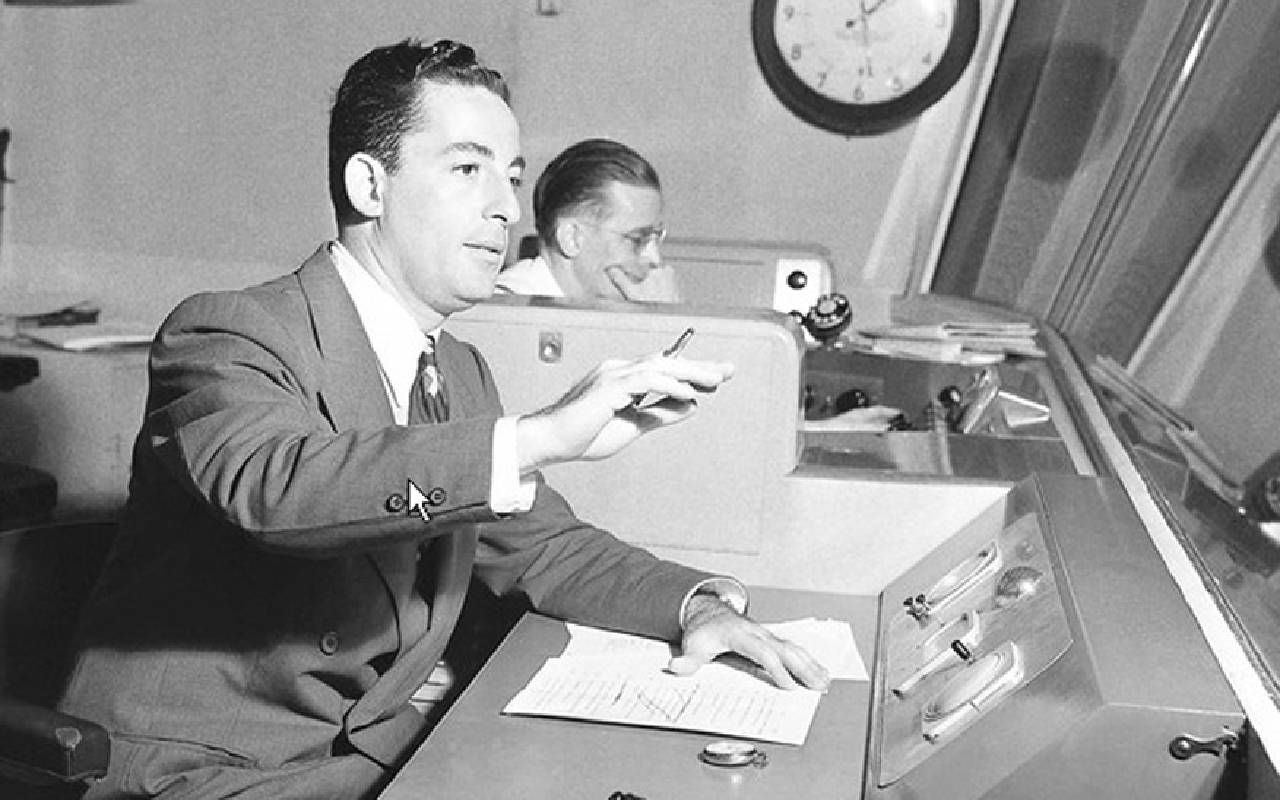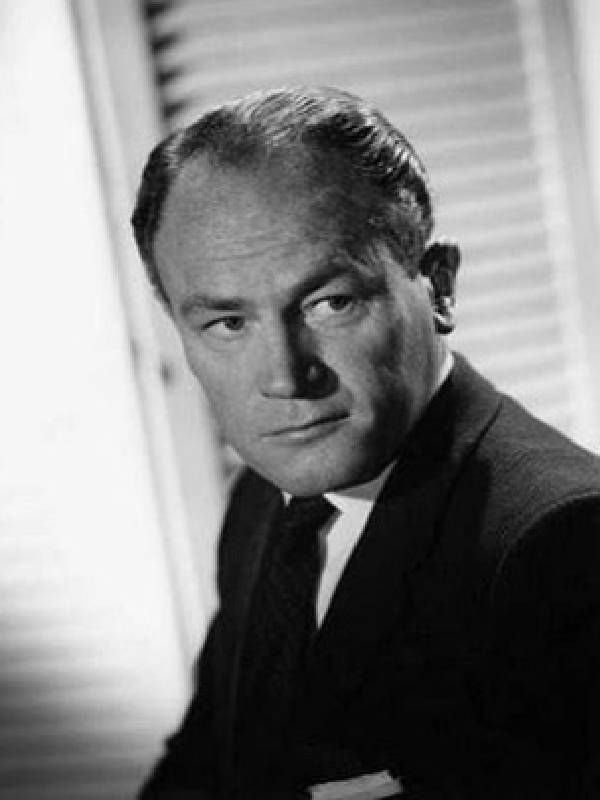Behind the Creaking Door
How the CBS Radio Mystery Theater revived the art of audio drama half a century ago
The CBS Radio Mystery Theater went on the air 50 years ago, on January 6, 1974. As one of the first national radio anthology series since the mid-1960s, it offered mystery, science fiction, historical, and horror stories; it also had legs: The show lasted nine years, a run that included 1,399 original episodes and totaled nearly 3,000 broadcasts.

Creator and producer Himan "Hi" Brown revived radio theater in part for an audience that remembered and appreciated the medium's "golden age" from the 1930s to the 1950s. Having created some of radio's most popular shows, including Inner Sanctum Mysteries (1941-1952), Terry and the Pirates (1937–1948), and Grand Central Station (1937–1954), Brown's confidence in the CBS Radio Mystery Theater was clear from the outset.
"[Radio drama is] the most personal form of entertainment — just you and the radio and your imagination," he said just days before the show's premier. "It's the theater of the mind. Movies and television can't duplicate it."
'Theater of the Mind'
Broadcast on more than 230 stations, Mystery Theater also attracted younger listeners, who found novelty in the show during its initial run and who remain loyal fans to this day courtesy of websites and video-streaming platforms that preserve every episode.
"In the end, it's a very well-done show, with a bunch of top-notch actors who really knew their stuff," says John Slavney of Madison, Wisconsin, who is currently writing a book on the show's history. Like many original fans, Slavney merely stumbled upon the program in 1974.
"Around the same time, cable TV arrived in Madison, and I was drawn to "The Twilight Zone," "The Outer Limits" and the Alfred Hitchcock shows — all of which I had never seen before. The CBS Radio Mystery Theater afforded the opportunity to listen to stories on the radio — often the same kind of gothic, mystery or supernatural tales that were featured on those TV shows."
"In the end, it's a very well-done show, with a bunch of top-notch actors who really knew their stuff."
Each episode famously began with the sound of a heavy door swinging open on distressed hinges — known among fans as the "creaking door." The host, veteran Broadway, film and television actor E. G. Marshall, then welcomed listeners into his storytelling chamber, where he narrated the one-hour, three-act shows. (Performer Tammy Grimes became host for the final year.)
The plots were typically suspenseful and often spooky — whether it was a professor committing murder because the spirit of Jack the Ripper inhabited him ("The Strange Case of Lucas Lauder"), the writer O. Henry uncovering why several suicides took place in the same hotel room ("Don't Die Without Me"), or a woman poisoning men who've slighted her ("The Poisoned Pen").
There also were several Sherlock Holmes tales, dozens of ghost stories and adaptations of classic tales by Robert Louis Stevenson, Edgar Allan Poe and Edith Wharton, among many others.
A Veteran Actor's Delight
"I had such a ball doing Mystery Theater," says Tony Roberts, the actor best known for his work on Broadway and in several Woody Allen movies. "It was such a wonderful opportunity to gather with other performers and practice a skill that had been obsolete for years."
Roberts performed in 74 episodes and says he appreciated the latitude Brown allowed his actors. The challenge, however, was to quickly inhabit a character because scripts weren't provided in advance.
"You know the way kids play cops and robbers? They don't talk about it beforehand. They just pretend instantaneously," Roberts says. "That's what happened in radio. But that's a quick process — you either have it or you don't."
Another veteran actor, Paul Hecht, agrees. "It's a technical ability to sight read, and I had it. Not everyone is good at it," he says. Hecht, who already amassed extensive experience in radio, stage, television and film, joined Mystery Theater in its first month and acted in 138 episodes.
Episodes Done in a Day
He vividly recalls how each production unfolded in similar fashion. "Everyone got the script that morning and read through it once together," he says. "Then Hi made his cuts [trimmed dialogue] before we did it in the studio. You had to know how to bring it to life right away. It requires a certain knack to put everything into the voice."

With the exception of the host's segments, the actors performed together in the studio in real time along with recorded music and sound effects. Unlike previous iterations of radio dramas, which were broadcast live, Mystery Theater was taped in numerous segments and edited together.
"It was as live as we could make it," recalls Russell Horton, veteran of 236 episodes. "But it was like getting on a rollercoaster. We'd get a thrill if we could get through a show with almost no breaks."
When Horton joined the show, he had already logged more than a decade of work in TV and the theater. In radio, he found true performance freedom.
"As an actor, you can be the prisoner of what you look like," he says, referring to his slight build and boyish looks at the time. "No one's going to hire me as a mafioso don — but there I was on radio, doing it."
In addition to portraying gangsters, ghosts, cowboys and spacemen, Horton also played Alexander the Great, Egyptian king Ahkenaten and Roman consul Marcus Rufus.
Borrowed Broadway Stars
Mystery Theater was produced in Studio G of the CBS Radio Annex on East 52nd Street in Manhattan. Because of the studio's proximity to the theater district, Brown frequently tapped Broadway stars like Marian Seldes and Howard Da Silva to bring their vocal talents to the radio.
In 1975, shortly after performing in "Equus" on Broadway, Tony-award winning actress Roberta Maxwell joined the cast. "It was a company who were telling stories — imaginative stories — with their voices," Maxwell says. "No faces, no movement. The only thing we had was our voices to communicate our imagination to the audience, who then used their imaginations."
Mystery Theater quietly went off the air at the end of 1982. Its successful run, including winning a Peabody Award in 1974, gave rise to other radio series like the Himan Brown-produced General Mills Radio Adventure Theater (1977) and the Sears Radio Theater, which became Mutual Radio Theater (1979–1981). In 1990 Brown and the CBS Radio Mystery Theater were inducted into the Radio Hall of Fame.
The show became a hit because of the sincerity — and plenty of melodramatic pomp — in the actors' performances, which came through whether heard in a car, on a home stereo or with a homemade crystal radio set. Additionally, the charming simplicity of the storytelling belied the enormous amount of work behind it.
The Artists Behind the Actors
Writers like Sam Dann, Ian Martin, Elspeth Eric and James Agate Jr. churned out scripts for the show, which ran seven nights a week for much of its nine years.
Working in the control booth alongside Brown was engineer and technical director Fred Himes, who controlled the microphone levels and the music that helped scenes transition to new locations or different times in the storyline.
Over the years, three effects technicians, Jimmy Dwan, Jerry McCarthy and Peter Prescott, provided every non-vocal, non-musical sound — footsteps, airplane turbulence, ringing telephones, cars screeching to a halt — to help the stories come alive.
Chilling Sound Effects
The effects technicians' work was precisely coordinated with the actors' dialogue and could be so nuanced as to go almost unnoticed. (For instance, when a character opens a door in 1974's "Dr. Jekyll and Mr. Hyde," for just a brief moment, a cold wind is heard blowing outside before the door closes, adding atmospheric chill to the scene.)
Mystery Theater's production quality was far ahead of radio programs from earlier in the century and it set a high bar for the future of audio drama. For millions of listeners, it became a cherished nighttime story hour, memorable enough to stay with them for decades.
"I was getting more mail about that show than anything else in my acting career."
By the turn of the millennium, bootleg copies of the shows — taped straight from the radio — were popping up on the internet, followed by fan pages and Facebook groups discussing the episodes and hosting listening parties.
"About 20 years ago, I started getting mail from people listening to Mystery Theater," says Jada Rowland, who starred on Broadway and in popular soap operas in the 1960s and '70s before acting in 52 episodes of Mystery Theater. "I was completely shocked. And I was getting more mail about that show than anything else in my acting career."
"I was thrilled when they asked me to come back."
Celebrated performers from the golden age of radio, such as Robert Dryden, Mercedes McCambridge and Ralph Bell, suddenly gained new admirers thanks to their Mystery Theater work. Conversely, some of the show's younger talent, like John Lithgow, Morgan Fairchild and Sarah Jessica Parker, went on to build substantial entertainment careers, though most often in visual mediums.
"I had received recognition in film and television, but radio was new to me," says Kathleen Quinlan, an Academy Award-nominee for "Apollo 13" (1995). She had been nominated for a Golden Globe for 1977's "I Never Promised You a Rose Garden" before her first performance on Mystery Theater, in 1979. "It was really fun," she recalls. "I loved those actors' voices. I was thrilled when they asked me to come back."
'Old Ones Are Hard to Kill'
After Mystery Theater came to an end, Brown produced radio entertainment, often about historical and literary figures. Before his death, in 2010, Brown had founded the Radio Drama Network, a private foundation to support the many forms of spoken word, including podcasts. He would often sum up the unstoppable trajectory of amplified audio entertainment by saying, "From the crystal set to the internet."
Brown's granddaughter, Melina Brown, is now the foundation's president and says that despite his legacy, "Himan Brown didn't like to dwell on his shows from the past. He always wanted to concentrate on new shows."
Still, half a century ago, Mystery Theater's first episode was "The Old Ones Are Hard to Kill," a title that may be an appropriate — and appropriately macabre — explanation for the show's enduring popularity.

